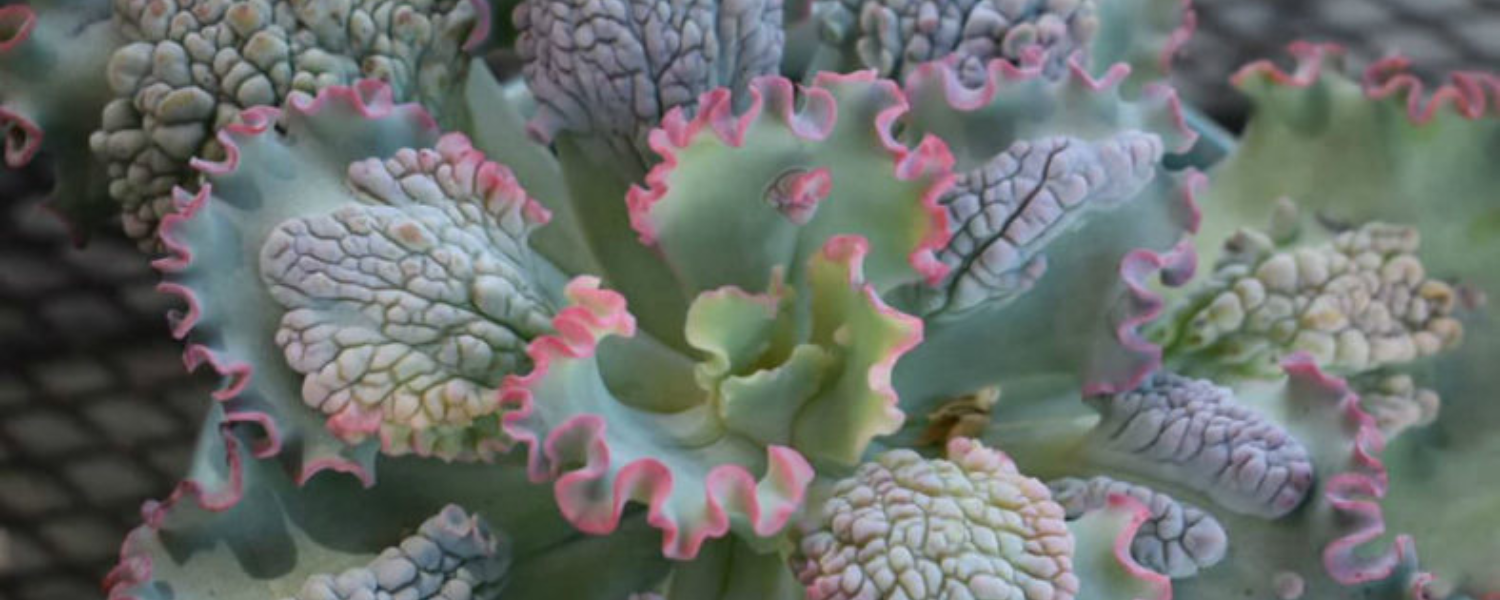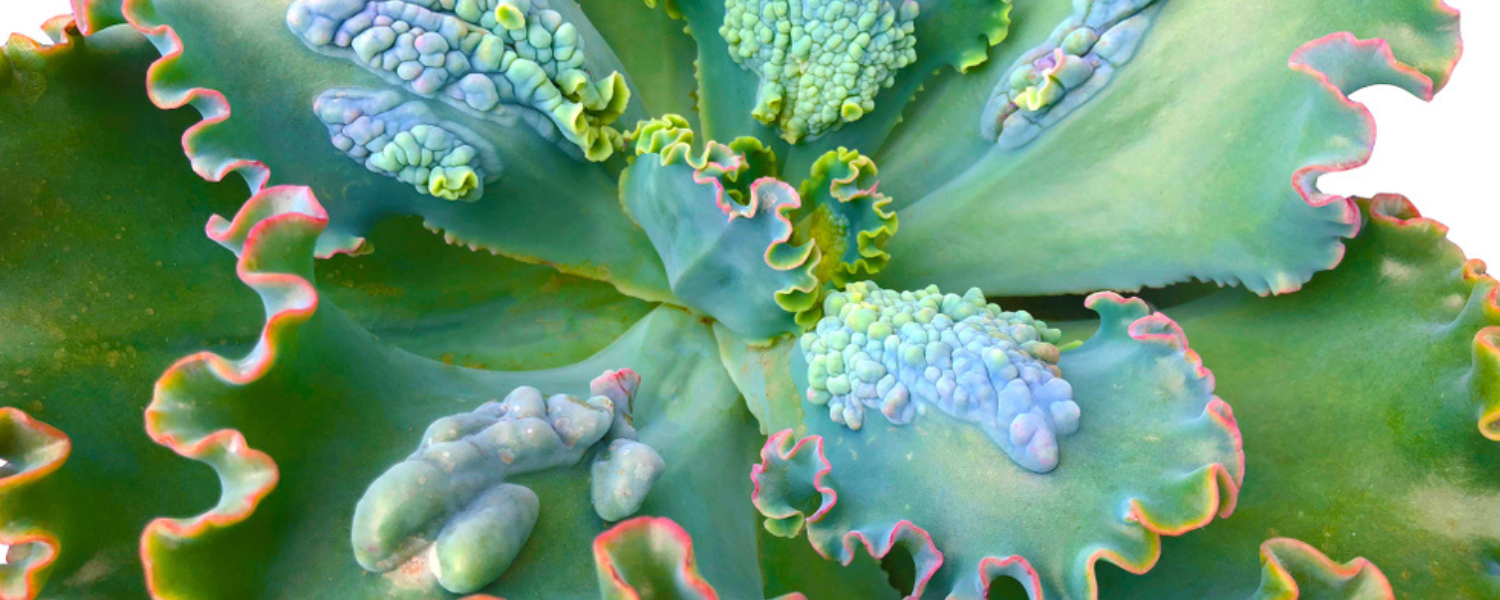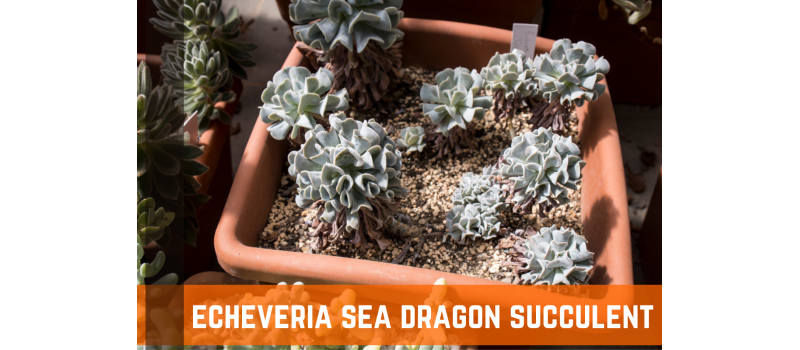Echeveria Sea Dragon is commonly found in Mexico, although there are also some in Central America, South America, and the United States. Rocks, forests, and dry regions are favorable to them in their natural habitat. The species can have a vast range in their evergreen or deciduous characteristics. Short stalks bearing flowers arise from dense rosettes with vibrant leaves.
They may blossom several times over their lives. The species can withstand drought, although it thrives with some water and fertilizer. Its hybrids and cultivars typically have lower tolerance levels for frost, continuous shadow, and intense sun exposure. Echeveria Sea Dragon is a vibrant succulent plant. It produces short-stemmed rosettes that can grow to be up to 16 inches in diameter and up to 12 inches tall. The leaves can grow up to 8 inches long, are spoon-shaped, have wavy edges, and have a reddish-green tint.
Growing Conditions For Echeveria Sea Dragon
Light & Temperature
It does well in direct sunlight to slight shade. The best window for an indoor plant is one that faces east or west and gets four to six hours of sunlight daily. It enjoys summertime temperatures between 65°F to 70°F.
Soil & Water
Echeveria Sea Dragon thrives in an all-purpose potting mix that contains an equal amount of sand and succulent mix with an optimal pH of 6.0. Echeveria plants need regular watering in the spring and summer. Make sure the soil is consistently moist but not saturated. You can let the topsoil get just a little bit dry in between waterings. In the winter, use less water.
Nutrition & Fertilizer
At the start of the growing season, fertilize with a controlled-release fertilizer or once a week with a mild liquid solution. On mature plants, apply a balanced 20-20-20 fertilizer at 1/4 strength; on young plants, apply a fertilizer with less nitrogen.

How To Propagate Echeveria Sea Dragon
Carefully remove a leaf off the stem while being gentle to avoid damaging it. If properly plucked, it should be shaped like a u. Allow the leaf to callous for a few days. After that, place the leaf at a 45-degree angle to the propagation media, resting it on a stick or something similar, on top of your preferred propagation medium.
Indirect light is preferable to direct sunlight for propagation. An alternative is to utilize a grow lamp. In two to four weeks, the roots should start to grow. As the plant develops, you can spritz or lightly water your leaves at this time, depending on the humidity and rainfall in your area.
When To Repot Your Echeveria Sea Dragon Succulent
Repot your plant when necessary, ideally in the summer. Make sure the dirt is completely dry before re-potting a succulent, and then carefully remove the pot. Make sure to remove any rotting or dead roots when you remove the old soil from the roots. Use a fungicide on any cuts. Spread the roots out as you repot the plant, then put it in its new container and cover it with potting soil. To lower the chance of root rot, let the plant dry out for about a week before starting to water it lightly.

Common Echeveria Sea Dragon Pests & Diseases
Echeveria sea dragons require little care, but they are prone to some pests and illnesses. Mealybugs, aphids, and spider mites are typical pests. The plant may become weaker and start to lose moisture due to these bugs. It's crucial to routinely check the leaves and stems for pest activity to avoid infestation. If any are discovered, they need to be taken care of right away.
Echeveria sea dragons are prone to fungus-related ailments such powdery mildew and root rot. The leaves may become yellow and fall off as a result of these diseases. Watering the plant from the bottom up and keeping the leaves dry are crucial for preventing fungal growth. Remove any diseased leaves and improve airflow around the plant if you see any disease symptoms. Echeveria sea dragons can live a long time and still be healthy and attractive with the right care.
Conclusion
The Echeveria Sea Dragon is a succulent plant that is native to Mexico. It is a member of the Crassulaceae family, which includes many other popular succulents such as jade plants and sedum. The echeveria sea dragon gets its name from its unique appearance - the leaves are green with red tips, and they are arranged in a spiral pattern that resembles the shape of a dragon.
The plant is relatively slow-growing, and it can reach up to 12 inches in height. Echeveria Sea Dragons are popular houseplants, and they are relatively easy to care for. They prefer sunny locations and well-draining soil, and they should be watered sparingly to prevent root rot. With proper care, Echeveria Sea Dragons can thrive for many years.

